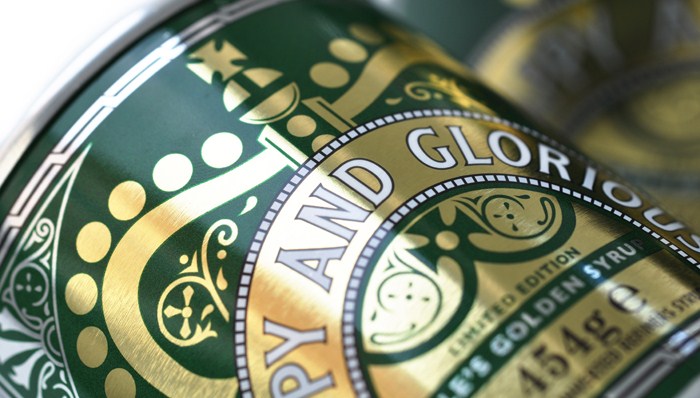Back of pack and battling with barcodes – what it’s really like to be a writer for design
Design Bridge’s Holly Kielty shines the spotlight on the oft-overlooked design consultancy writer.

A couple of weeks ago I was chatting to a friend in her kitchen and I noticed she’d bought a tin of Lyle’s Golden Syrup. I was touched – but then she confessed she’d not known it was anything to do with me. When I mentioned I was the copywriter involved, she was astounded such a job existed (it went downhill from here).
‘That’s weird,’ she said, ‘I always thought the people in the factories where the product’s made wrote all that stuff’. With that, a decade-long career was put firmly into perspective.
But why shouldn’t my friend believe that to be the case? Why should she know what a writer in design does? I used to work in advertising, where the role of copywriter is broadly understood by the general public (probably thanks to Mad Men), but now that I’m in the design industry, few have an inkling of what I do all day. Certainly my loved ones are mystified. So what exactly does it mean to be a writer in a design consultancy?
Well firstly, for me, it meant coming down off my pedestal. And being much more flexible in my approach. In my experience, writers in advertising were held up as linchpins of the creative process. You didn’t dare move a comma without serious consultation. In packaging, copy is, and I say this without bitterness, sometimes simply another element to fit on to pack. But there’s been a shift. Brands like Innocent paved the way to words becoming fundamental to the crafting, storytelling and originality of a pack. So while I do still answer occasional demands for ‘20 words to fill this space’, I don’t actually mind – because that’s possibly 20 more words than would have been considered worthy of attention ten years ago. And for every one of those briefs, I’ll have another that requires me to play an intrinsic part in developing a big brand idea.
And that can sometimes mean that as a writer, I’m writing very little. I spend a lot of time with designers at the beginning of projects, unravelling a brand’s character, what makes it tick, how it expresses itself – through image and word. But the fact is, not all brands need to say that much. With the new Tanqueray No. Ten design, despite me spending umpteen man-hours on the project, the copy is actually fairly minimal. And rightly so. It has used several visually arresting ways to tell its story, and I was more than happy to let those elements do the talking.
On that note, being a writer for design means you need a visual brain. I prefer Instagram to Twitter. I’m fascinated by how images reach out to people, and how words can complement that. Because no matter how brilliant the writing, or how creative the design solution, unless they work seamlessly together, it’s fruitless. People may claim ‘no-one reads copy anymore’, but if anything, people are more inventive with words than ever, on a constant, ‘#omg’, level, and they expect the same from the brands they choose. Ill-considered copy (or copy that’s not been considered at all) will quickly undermine every effort that’s gone into the design work. Engaging, well-written copy will elevate both design and message. We humans like to be spoken to, we like stories. And that keeps my days pretty busy.
So while being a writer in a design consultancy does mean a less formalised, clean-cut role, and the odd cry of, ‘Can you cut this copy down to make room for the barcode?’ I don’t mind one bit. Because I’m a part of a creative process. And when design and copy work together well, something magical happens. People buy the product. And what’s more, you may even see the fruits of your labours in your friends’ homes. And that, for me, makes it all worthwhile.
——————
Holly Kielty is creative director, brand language, at Design Bridge.
-
Post a comment




